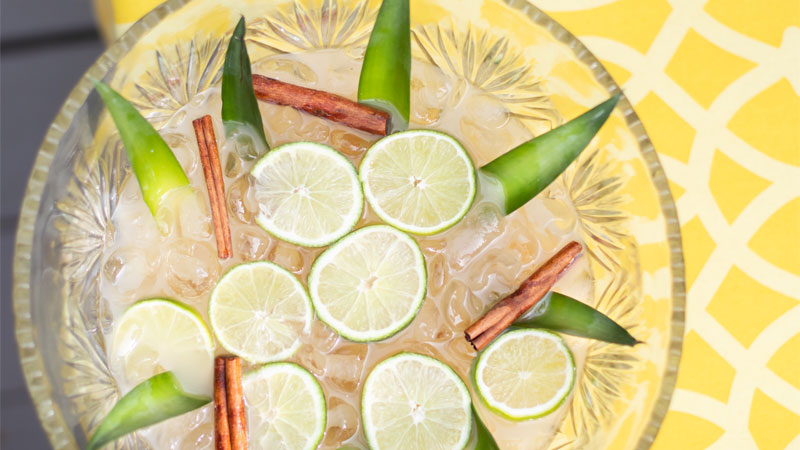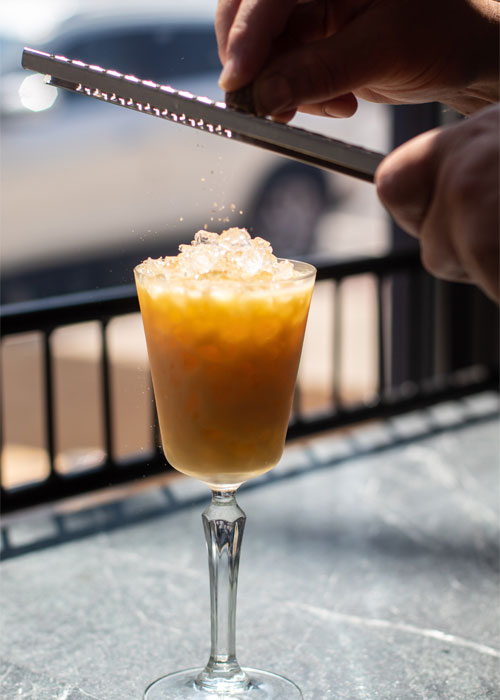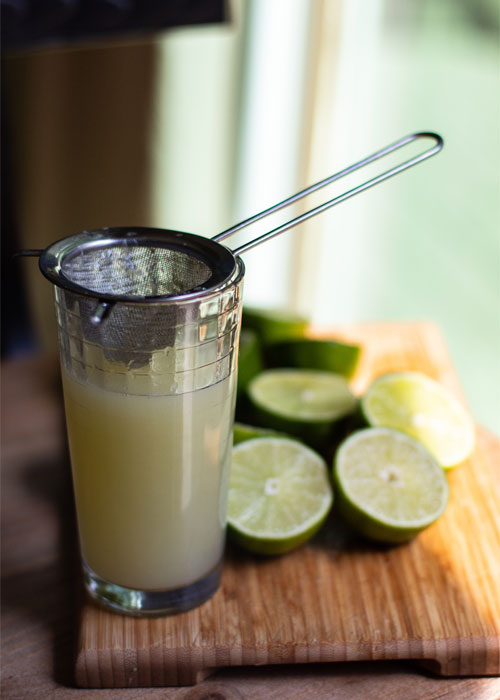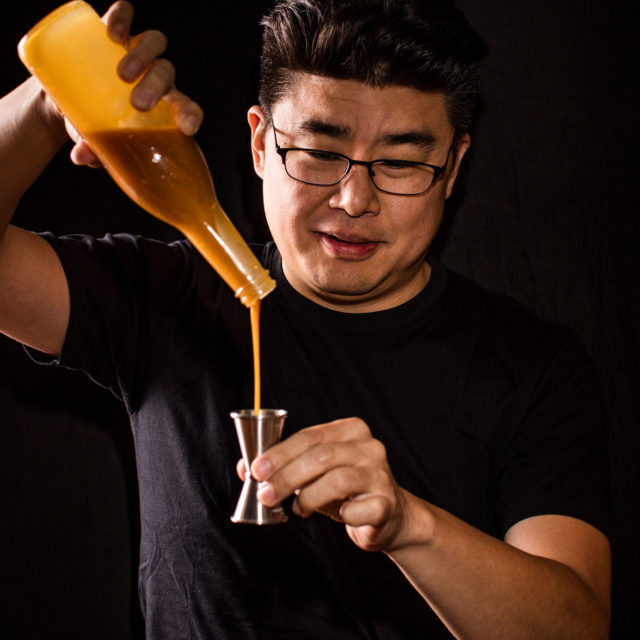When it comes to balancing flavors in your favorite cocktails, acid is vital. It can come from a variety of places, too. Your drink might get its kick from vermouth; verjus, a highly acidic juice made by pressing sour fruits; shrubs; or lacto-fermented substances like yogurt (yes, yogurt!).
Of course, citrus fruits are the most common source of acidity at cocktail bars. Some craft bartenders have developed cutting-edge techniques to manipulate it in their cocktails.
Welcome to the world of acid-adjustment.
“Acid-adjusting is the process of adding either citric acid, or citric and malic acids to a juice with a low titratable acidity (i.e., pineapple, grapefruit, or orange juice) to bring the total acid level to the same as that of lemon or lime,” Jack Schramm, head bartender at Existing Conditions, says.
Let’s say you want to make a Margarita with grapefruit juice. If you simply swap out lime juice for grapefruit, your cocktail will taste unbalanced.

“Juices like orange and grapefruit have great flavor, but lack the acid backbone to deliver the necessary punch of brightness in sour-style cocktails,” says Schramm. Adding lemon or lime juice in addition to grapefruit, for example, would increase the acidity level, but then the incremental dilution (the added water content) from the grapefruit would call for greater adjustments to ensure the cocktail is balanced.
“Acid-adjusting retains [citrus fruits’] natural flavor, but gives a bartender the ability to balance drinks using standard ratios like a Daisy spec, or Daiquiri spec,” Schramm says.
Acid-adjustment is an effective way to balance flavors and acidity without having a mucky mess of citrus juices or sweeteners. It also allows bartenders to create consistent juices, cordials, and syrups for their cocktails.
Sometimes, bartenders will mix measured quantities of citric or malic acid with water to replicate the flavor of lemon or lime without actually having to juice any fruits. This process is certainly less labor-intensive than juicing fruit, but these solutions also lack the body and texture that comes with freshly squeezed citrus so they aren’t a fit for every cocktail. That said, this is when cocktail programs will sometimes lean into other types of acids to strike balance in their drinks.
“The benefits of acid-adjusting, or as we are terming for our program ‘alternate acids,’ is both that of sustainability and creativity,” Vinny Starble, bar manager at Bad Hunter in Chicago, says. By leaning on the use of other types of acids, or acid-adjusting water to mimic citrus juices, the team at Bad Hunter makes the choice to not support commercial farming, and only use in-season ingredients.
“Different types of acids hit the palate at different places and can change how a drink feels and tastes,” Starble says. “We wanted to explore different acids as an ingredient and not an afterthought of balance.”
“When I first heard of acid-adjustment the first place my mind went was the maligned classic Blood and Sand cocktail,” Patrick Smith, bar manager at The Modern NYC, says. “It’s a shaken cocktail made with blood orange, a low-acid citrus, alongside Scotch, sweet vermouth, and Cherry Heering.”
The Blood and Sand skews sweet for many modern palates, Smith explains, so swapping blood orange for another fruit makes sense. “If you were to acid-adjust the blood orange juice up to the level of lemon or lime, this cocktail would taste more fresh and balanced, and would allow the full and rich flavors of the sweet vermouth and Cherry Heering to shine more fully,” he adds.
Acid-adjustment is also part of the process of Schramm’s The Remedy, a riff on a classic Painkiller (which is essentially a Piña Colada with some orange juice). The acid-adjusted orange juice gives the cocktail three-dimensional appeal, and the brightness of the orange really pops.

How to Make Acid-Adjusted Juices at Home
Want to turn grapefruit, pineapple, and orange juices into lemon and lime — just like the pros? Master the ratios, and you can try a riff on your favorite classic with your nerded-up juice!
The ratios below are all measurements of citric and/or malic acid powder to one liter of juice.
Grapefruit to lemon: 40 grams citric acid powder
Grapefruit to lime: 27 grams citric acid powder and 13 grams malic acid powder
Orange to lemon: 52 grams citric acid powder
Orange to lime: 32 grams citric acid powder and 20 grams malic acid powder
Pineapple to lemon: 52 grams citric acid powder
Pineapple to lime: 32 grams citric acid powder and 20 grams malic acid powder

The Remedy
This recipe from Existing Conditions features acid-adjusted orange juice, caramelized sweetened condensed coconut, and saline solution, which is essentially simple syrup made with salt instead of sugar.
Ingredients:
- 45 milliliters Stiggins Fancy pineapple rum
- 15 milliliters Wray and Nephew white overproof rum
- 22 ½ milliliters orange juice acid-adjusted to lime (per above)
- 22 ½ milliliters caramelized sweetened condensed coconut, recipe below
- 4 drops saline solution
Instructions:
- Combine all ingredients in a cocktail shaker and shake to blend.
- Strain over pebble ice into a 10-ounce Collins glass.
Caramelized Sweetened Condensed Coconut
Ingredient:
- 1 can sweetened condensed coconut
Instructions:
- Place unopened can of sweetened condensed coconut in pressure cooker with enough water to cover at 15 psi for 1 hour. Do not overcook.
- Allow to cool completely on stovetop without rapid depressurization.
